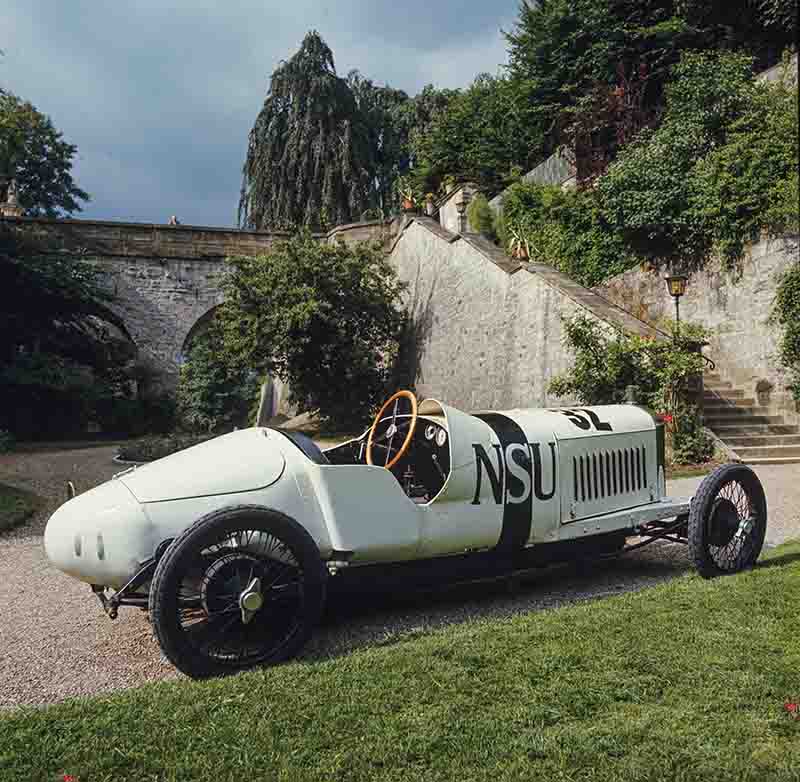 NSU Racing Car: Photo Edition
NSU Racing Car: Photo Edition
The NSU racing car photograph, remarkable for its distinct perspective and previously unseen details, forms a key element of an unique, limited photo edition.
NSU in European Racing
NSU, a name synonymous with German engineering, carved a distinctive niche in motorsport.
From the mid-20th century, its modest road cars evolved into formidable racing vehicles.
These NSU racing cars, often overlooked in broader narratives, consistently demonstrated unexpected capabilities.
They challenged established competitors on circuits and challenging hill climbs throughout Europe, securing notable victories.
The foundation of NSU's racing efforts lay in its production models.
The Prinz TT and Prinz TTS, small rear-engined sedans, became the primary platforms for competition.
Engineers significantly modified these compact cars. While seemingly conventional, their success proved the efficacy of NSU's applied racing knowledge.
Though the NSU automotive brand eventually integrated into other entities, its chapter in racing remains distinct.
The NSU racing car showcased how focused engineering and a commitment to competitive excellence could produce surprising results.
These vehicles cemented NSU's place in the history of German motorsport, a compelling example of innovation and determination on the track.
Design Characteristics:
-
Monoposto-style bodywork: Designed for a single driver with a narrow, streamlined cockpit.
-
External exhaust: Exposed manifold and side-mounted exhaust, typical of race cars from the era.
-
Wire-spoke wheels and slim tires: Optimized for dirt/gravel racing surfaces.
For those who respect ingenuity, the NSU race car stands as a bold statement of compact performance.
NSU racing cars represent a unique chapter in motorsport, transforming compact road vehicles into highly competitive machines.
12 key facts about NSU Racing Cars
-
Road-to-Race Genesis: NSU adapted standard cars for high-level motorsport competition.
-
Prinz Platforms: The Prinz TT and TTS models were core NSU race car bases.
-
Four-Cylinder Power: Standard engines were highly modified for racing output.
-
Wankel Pioneering: NSU introduced the rotary engine to competitive racing.
-
Spider's Rotary: The NSU Wankel Spider showcased the rotary engine in competition.
-
Chassis Optimization: Significant changes were made to car structure and handling systems.
-
Aero Focus: Designers implemented features to enhance vehicle airflow during races.
-
Diverse Success: NSU cars won in both circuit racing and uphill challenges.
-
Underdog Triumphs: Small NSU cars frequently beat bigger, stronger opponents.
-
Dual Competition: Both official factory teams and private entrants raced NSU cars.
-
Brand Validation: Racing improved NSU's reputation and proved its engineering.
-
Historical Mark: NSU racing cars formed a unique part of German racing history.
The subject matter: Rare oldtimer photographs of NSU racing cars holds immense appeal for motorsport historians, classic car owners, and NSU enthusiasts.
NSU Racing Cars: Timeline
NSU's motorsport history began early in the 20th century, building a foundation with initial car and motorcycle successes.
| Year |
Milestone |
| 1923 |
NSU started building dedicated race cars and achieved early successes, marking a commitment to competitive racing. |
| Mid-1920s |
NSU car racing reached a peak, securing several Grand Prix victories, particularly with compressor-equipped models. |
| 1957 |
The first NSU Prinz (Type I, II, III) models were introduced, later forming the basis for successful racing versions. |
| 1957 |
Felix Wankel's rotary engine started running, laying the groundwork for NSU's revolutionary Wankel-powered race cars. |
| 1964 |
The NSU Wankel Spider was introduced as the world's first production car with a Wankel engine, soon adapted for racing. |
| 1965 |
Siegfried Spiess, an engine specialist, became the German GT Hillclimb Champion in an NSU Prinz 1000, winning 8 out of 11 races. |
| 1966 |
Al Auger became the first person to race a Wankel-powered production car (NSU Spider) in a sanctioned race in the USA. |
| 1967 |
The highly anticipated NSU Prinz TTS, an even more powerful sports version, was added to the portfolio, becoming a motorsport icon. |
| 1967 |
The NSU Ro 80, featuring a two-rotor Wankel engine, was launched and voted "Car of the Year," showcasing NSU's rotary leadership. |
| 1967-1970s |
NSU TT and TTS models achieved widespread success, winning numerous national championships in hillclimbing and touring car races. |
| 1969 |
NSU Motorenwerke AG merged with Auto Union GmbH, forming Audi NSU Auto Union AG, leading to a shift in corporate motorsport focus. |
| 1977 |
Production of the NSU Ro 80, the last NSU-badged car, ceased. This marked the official end of NSU as an independent car brand. |
| Post-1977 |
NSU racing cars continue to compete in historic motorsport events, maintained and raced by enthusiasts and privateers. |
Following NSU's merger with Auto Union in 1969, and the eventual end of NSU car production in 1977, these racing machines continue to compete in historic motorsport events, preserving their unique place in German automotive history.
NSU: Compact Cars, Grand Race Wins
This particular NSU racing car photograph is set to become a key part of an exclusive photo edition.
Due for release in July 2025, the carefully curated collection will bring forth rare oldtimer photographs in limited edition, printed in museum quality.
NSU's Motorsport Footprint
The NSU racing car, despite its compact origins, proved that ingenuity and competitive drive could challenge powerful rivals
Its quiet assertion of power on track secured a specific and lasting place in motorsport history.
Witnessing an NSU race car compete proves that engineering wit can redefine what's possible in motorsport.
NSU Racing Car: FAQ
NSU transformed compact production vehicles into competitive motorsport machines. They focused on engineering and performance optimization.
The Prinz TT and Prinz TTS served as the most prominent NSU racing car platforms. The NSU Wankel Spider also raced.
No. While many used highly-tuned conventional four-cylinder engines, NSU also pioneered the Wankel rotary engine in racing.
The Wankel rotary engine, notably in the NSU Wankel Spider, demonstrated unique power delivery. It also provided valuable development insights.
Engineers extensively modified chassis, suspension, and braking systems. These changes aimed to enhance handling and durability.
NSU racing cars primarily excelled in European touring car championships and demanding hill climb events.
Yes, they achieved significant victories. These compact racers frequently bested larger, more powerful rivals.
Both official NSU factory teams and numerous independent privateers actively competed with the cars.
Racing significantly enhanced NSU's public perception. It also validated their engineering efforts and technological advancements.
NSU racing cars hold a distinct place in German automotive and motorsport history. They represent a unique era of innovation.

